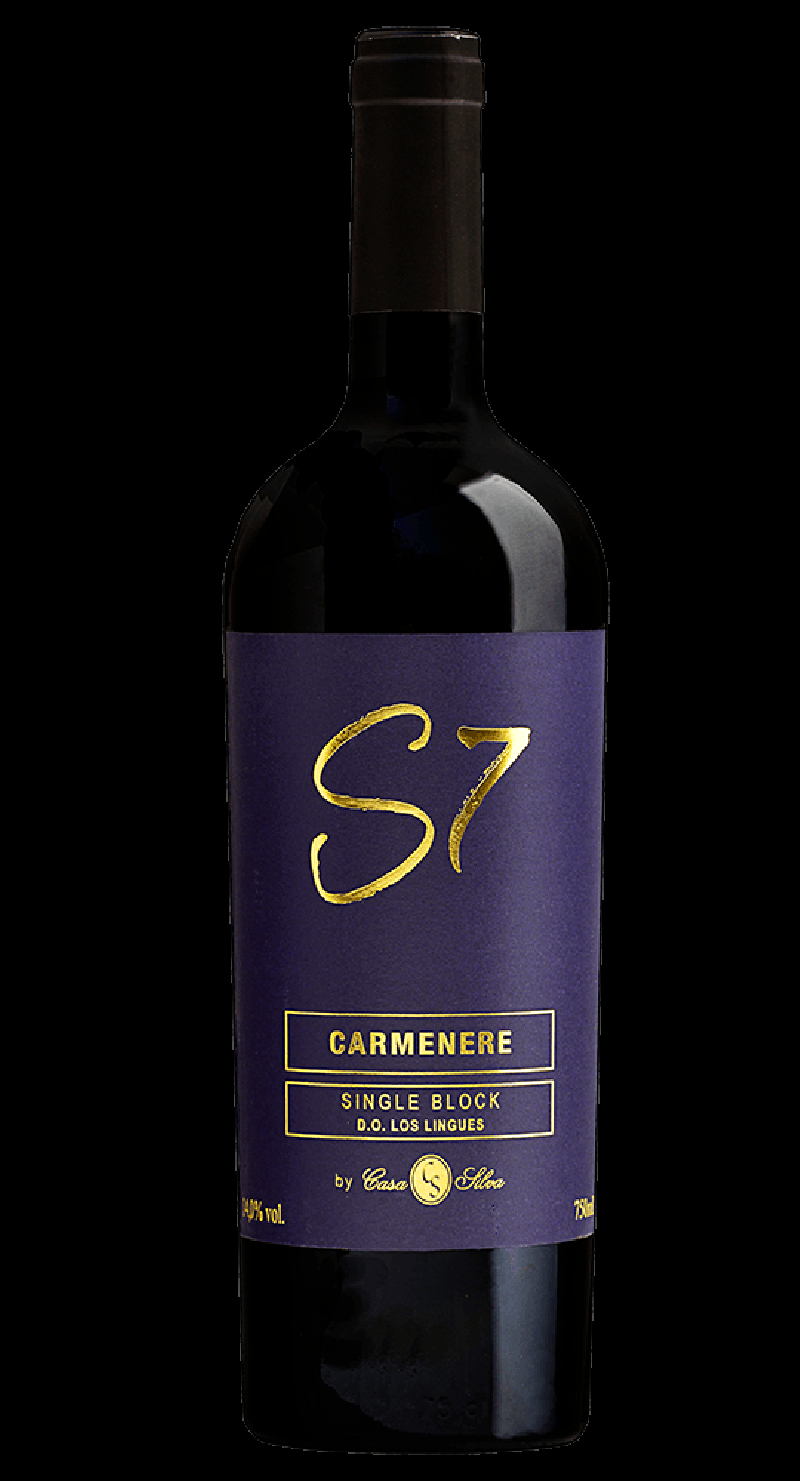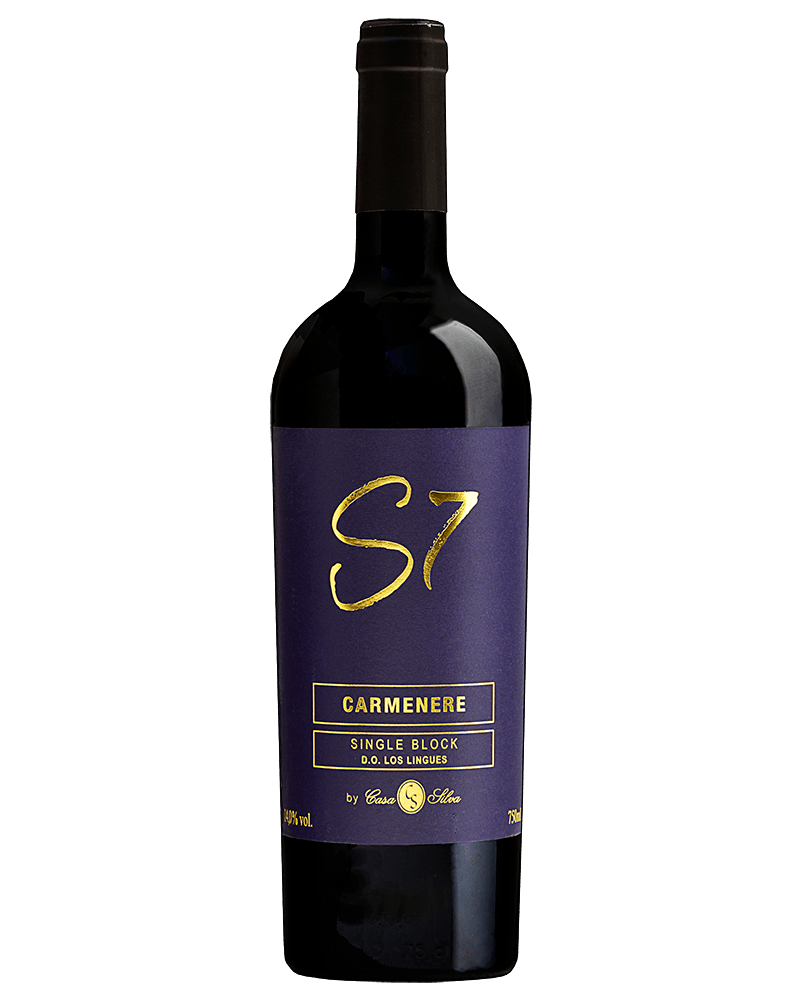

2021
Casa Silva
The dark-skinned grape variety originally hails from the vineyards of Bordeaux but has found a particularly suitable home in Chile. A late-ripening variety, Carménère needs high levels of sunshine and a warm summer to reach its full potential, but in the right environment, it can produce fine, deeply colored red wines, with the attractive meaty plumpness of Merlot and the gently herbaceous, cedary notes of Cabernet Sauvignon. Similarities with Cabernet Sauvignon and Merlot are not altogether surprising. DNA studies have shown that Carménère, Cabernet Sauvignon and Merlot all have Cabernet Franc as a parent.
Neither Cabernet Sauvignon or Merlot gained much momentum in the region until the mid 18th Century. Carménère was much more important, particularly in the Médoc. Here it had a longstanding and successful partnership with its parent Cabernet Franc and where it was one of the most widely planted varieties throughout that region.
This remained the case up until the 1860s, when the phylloxera louse (to which Carménère vines are particularly susceptible) arrived in Europe from the Americas. Carménère doesn't respond as well to grafting as Merlot or Cabernet Sauvignon, so the variety was largely abandoned when phylloxera resistant American rootstocks were introduced.
In pre-phylloxera 19th Century Bordeaux, enterprising Chilean vignerons had taken cuttings from the region's vineyards. However, a high proportion of what they believed to be Merlot, a grape variety in the early days of its fame, turned out to be the similar looking Carménère.
Though long established, the variety's popularity had waned considerably. This unconscious mistake probably saved Carménère from extinction. It is now Chile's flagship USP grape.
The leaves of Merlot and Carménère vines are so alike that the error was not uncovered until 1994, after DNA research was conducted in Montpellier.
Chile has capitalized on its status as the savior of the grape variety and has incorporated the vine's memorable story into its famously efficient wine marketing.Now that it has been identified, it has been “rediscovered” in northern Italy. For example, top Lombardy estate Ca'del Bosco purchased Cabernet Franc cuttings from a French nursery in 1990, only to notice the grapes ripened earlier than typical Cabernet Franc, and tasted and looked different. The cuttings were shown to be Carménère, and now produce a wine called Carmenero.
Region
Colchagua Valley, in central Chile, is one of South America's most promising wine regions. It forms the south-western half of the larger Rapel Valley region; to the north and east of it lies the less famous but equally promising Cachapoal Valley. Some of Chile's finest red wines are made in the valley, mostly from Cabernet Sauvignon, Carmenère and Syrah.
The region's desirable terroir, combined with persistent, focused marketing has made this one of Chile's most important wine regions, along with Maipo Valley in the north.
The official Colchagua Valley viticultural area stretches south-east to north-west for 70 miles (110km) at its widest point. Its western boundary is formed by the coastal hills which seem to run the entire length of Chile's vast Pacific coastline.
In the east, the vineyards are naturally limited by the foothills of the Andes, into which they creep further and further each year.
The Colchagua Valley boasts a textbook wine-growing climate: warm, but cooled by ocean breezes and dry, but refreshed by rivers and occasional rainfall. The region is a little cooler than its northerly cousin Maipo, but still maintains a consistently Mediterranean climate.
Winemaker
Viña Casa Silva is an award-winning, family-owned wine producer in the Colchagua Valley region of Chile. It has a broad portfolio of wines produced under a number of subsidiary brands and ranges. The most important grape varieties include Carmenère, Cabernet Sauvignon, Merlot and Sauvignon Blanc.
The estate was founded in 1997 by Mario Silva and his son Mario Pablo. The younger sons Francisco, Gonzalo and Raimundo joined the business soon after. The family are direct descendants of Emilio Bouchon, who emigrated from Saint-Émilion in 1892 and began making wine in Chile. Viña Casa Silva owns the oldest wine cellar in the Colchagua Valley, located on the century-old estate in Angostura. Behind the traditional facades of the buildings the equipment is very modern, and includes a dedicated area for small-batch production. There are temperature-controlled barrel rooms as well as old subterranean tunnels.
The estate has five vineyard properties. Four of these are located in the Colchagua Valley, though topography, soils, alitudes and proximity to the ocean all vary. All vineyards are certified under the new Wines of Chile Sustainability Code (Sustentavid).
The "home" vineyard at Angostura has parcels dating back as far as 1912. These feature plant material brought from France by the first generation of the Bouchon/Silva family.
Key varieties here are Sauvignon Blanc, Merlot, Chardonnay and Sauvignon Gris, which was re-discovered on the property in 1998.
Soils are fine sand over alluvial substrates. The climate is Mediterranean; summer temperatures range from 12 to 27°C (53.6 80.6°C), and average rainfall is 700mm (27.5 inches).
The Los Lingues vineyard has a particular reputation for Carmenère and Cabernet Sauvignon. It lies in a subsidiary valley with its own macroclimate.
Casa Silva name on the bottle: from the best plots in the Colchagua Valley. Reserva Cuvée Colchagua, Gran Terroir tiers plus special editions
With the help of wine searcher
- Type Red
- Grape variety 100% Carmenère
- Appellation Colchagua Valley
- Country Chile
- Region Colchagua Valley
- Year 2021

